
Ponderosa Pine Pinus ponderosa
The classic pine of the western mountain states and one of my favorites, perhaps because I have walked and slept among them in so many wild area of the western United States. The jiggsaw-puzzle piece bark makes this an easy tree to recongnize. Needles are 10 inches long in bunches of 3 and rough to the touch. The ground under a Ponderosa Pine is often thick with brown needles and open cones. In the Santa Lucia Mountains they can be found beginning around 1800 feet elevation and up. They can be seen from a distance on many of the high ridges of this range.
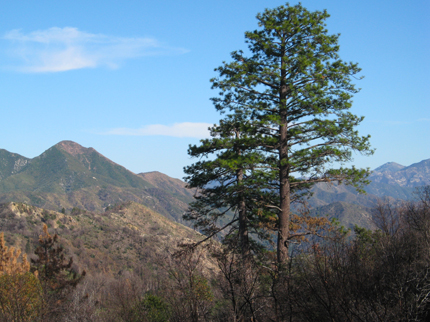
Mature trees can grow anywhere from 120 to over 200 feet tall.
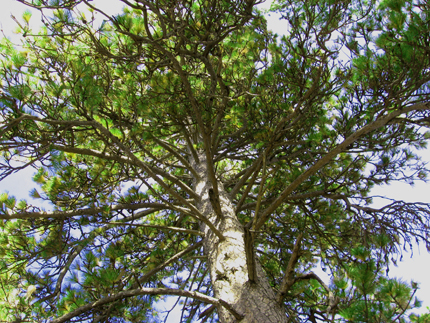
Under a Ponderosa Pine.
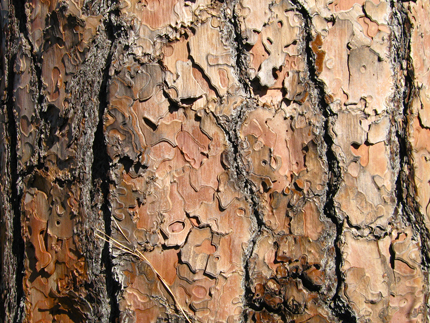
The reddish brown puzzle piece bark that flakes off makes it easy to identify the Ponderosa Pine.
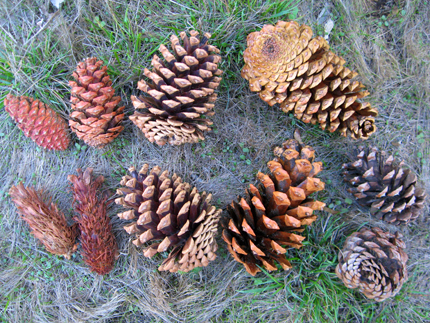
All of the above cones were collected from the same stand of Ponderosa Pines, demonstrating the wide variety of cone shape, size, and color.'The cones in the bottom left of photo have been eaten by Western Gray Squirrels.
Squirrels will chew off the scales to get to the seed and the base of each scale.
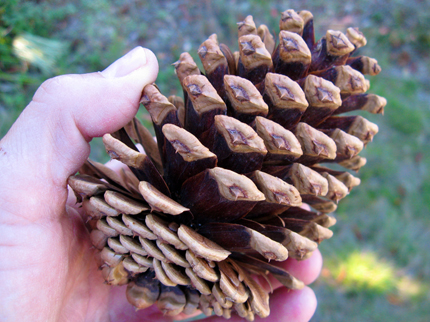
A "typical" size and shape of a Ponderosa Pine
cone as you might find it on the ground.
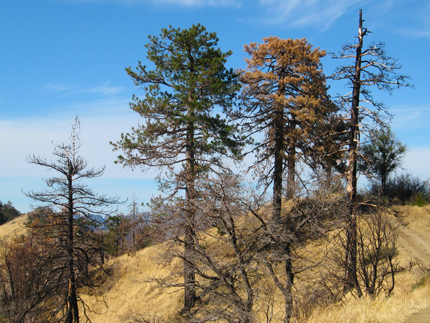
Ponderosa Pines have evolved with fire. Taken on year after the Basin Complex Fire you can see two pines that burn complete, a second example that burned and died later (brown needles), and a third that survived the fire.
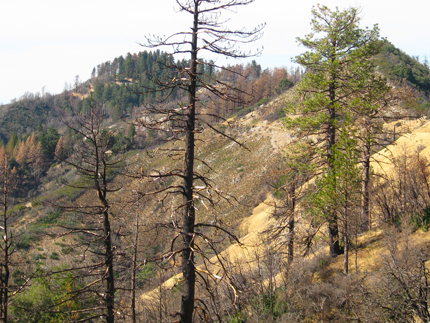
Notice how the fire burned some Ponderosa Pine stands
and left others untouched or just burned through the understory. Fire in coastal mountains almost always burn in a mosaic pattern leaving some areas untouched while other areas burn complete.